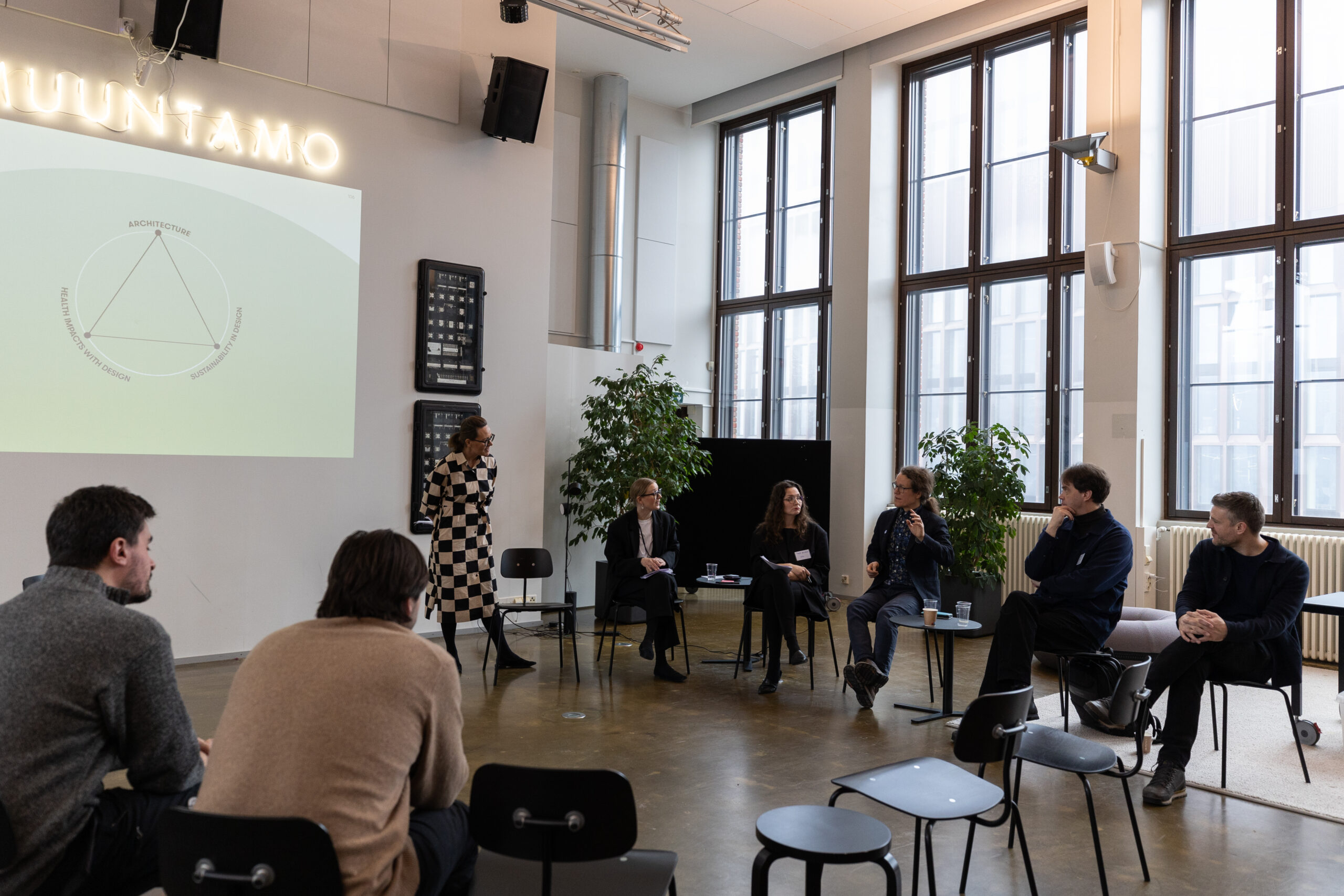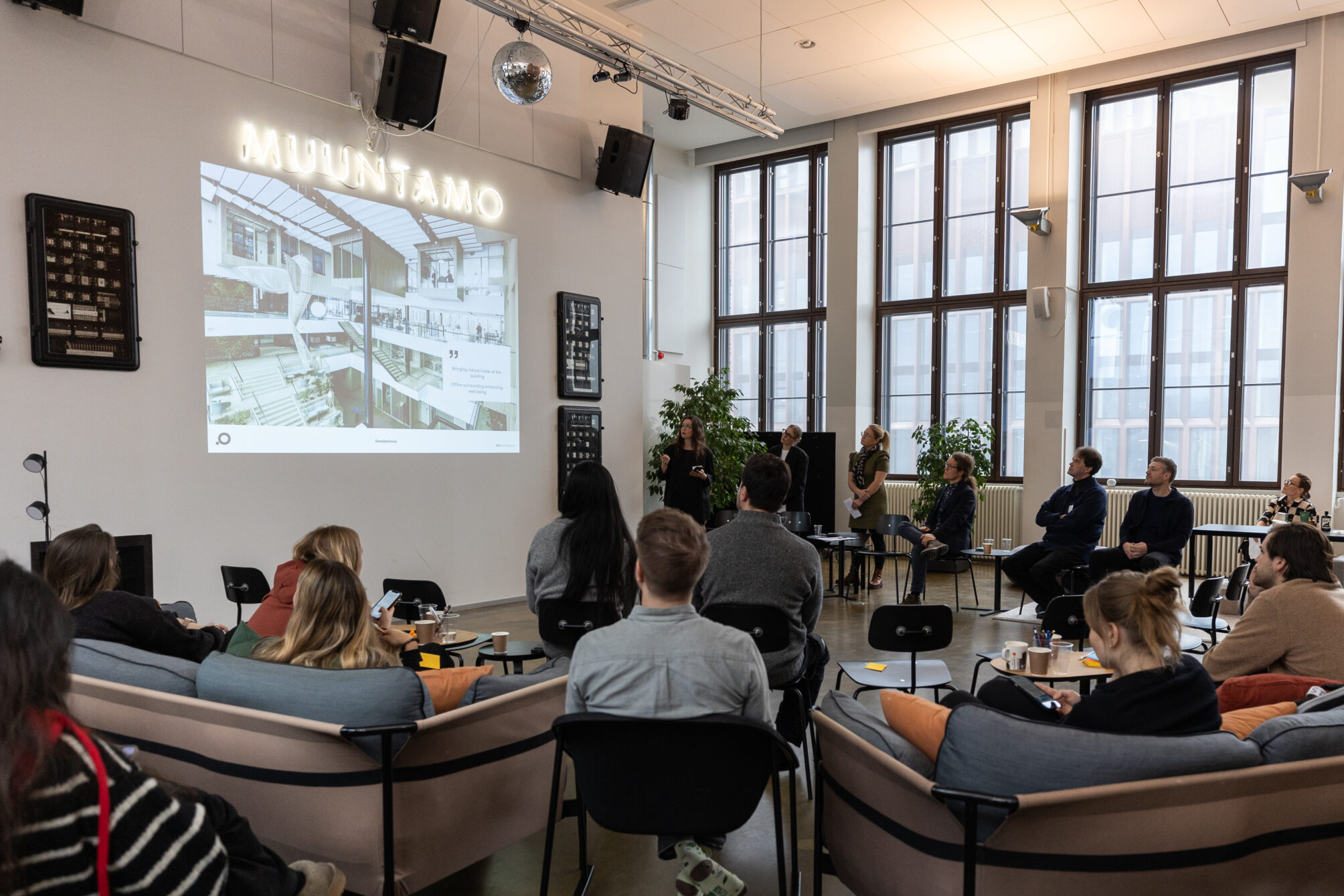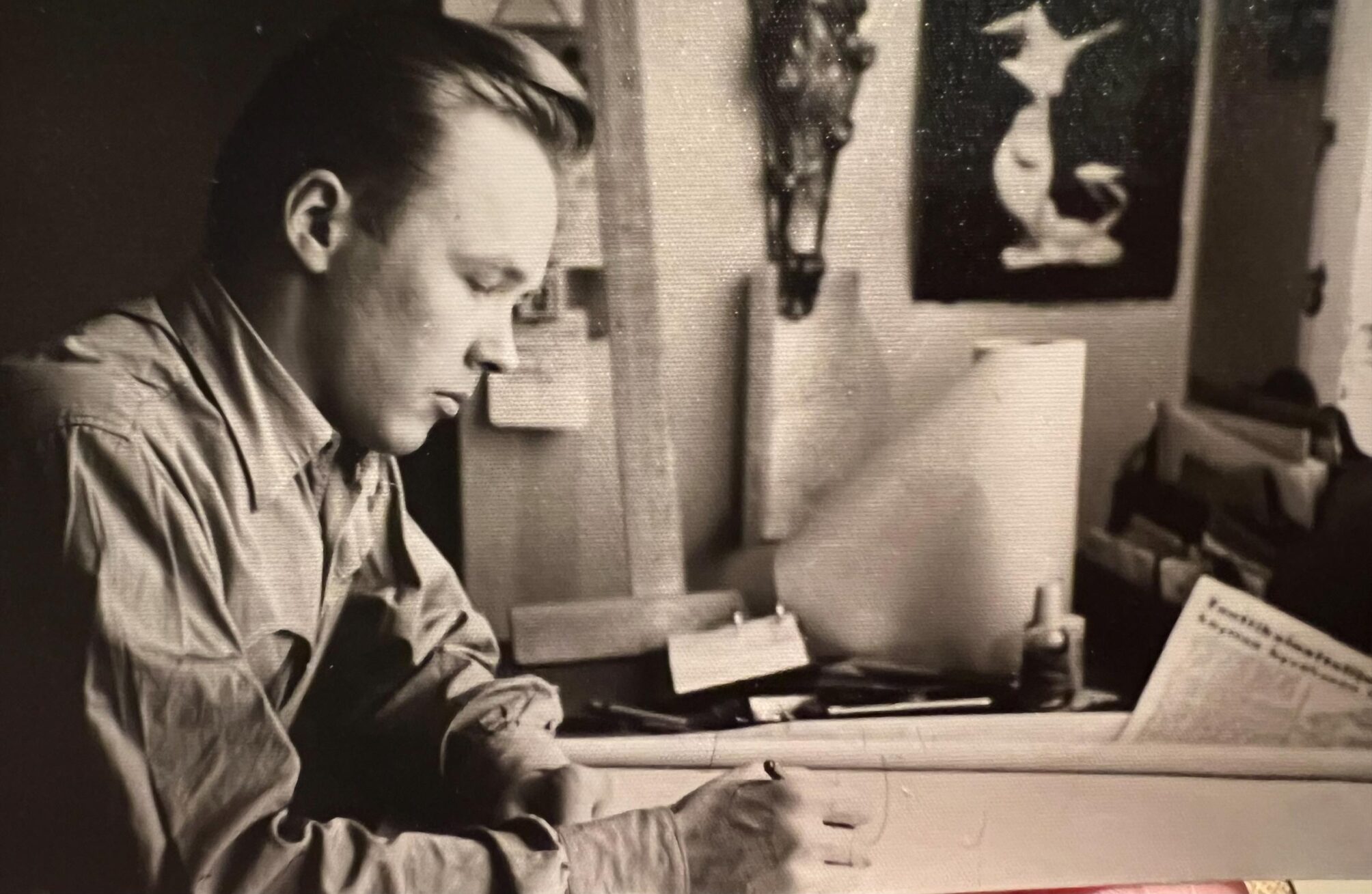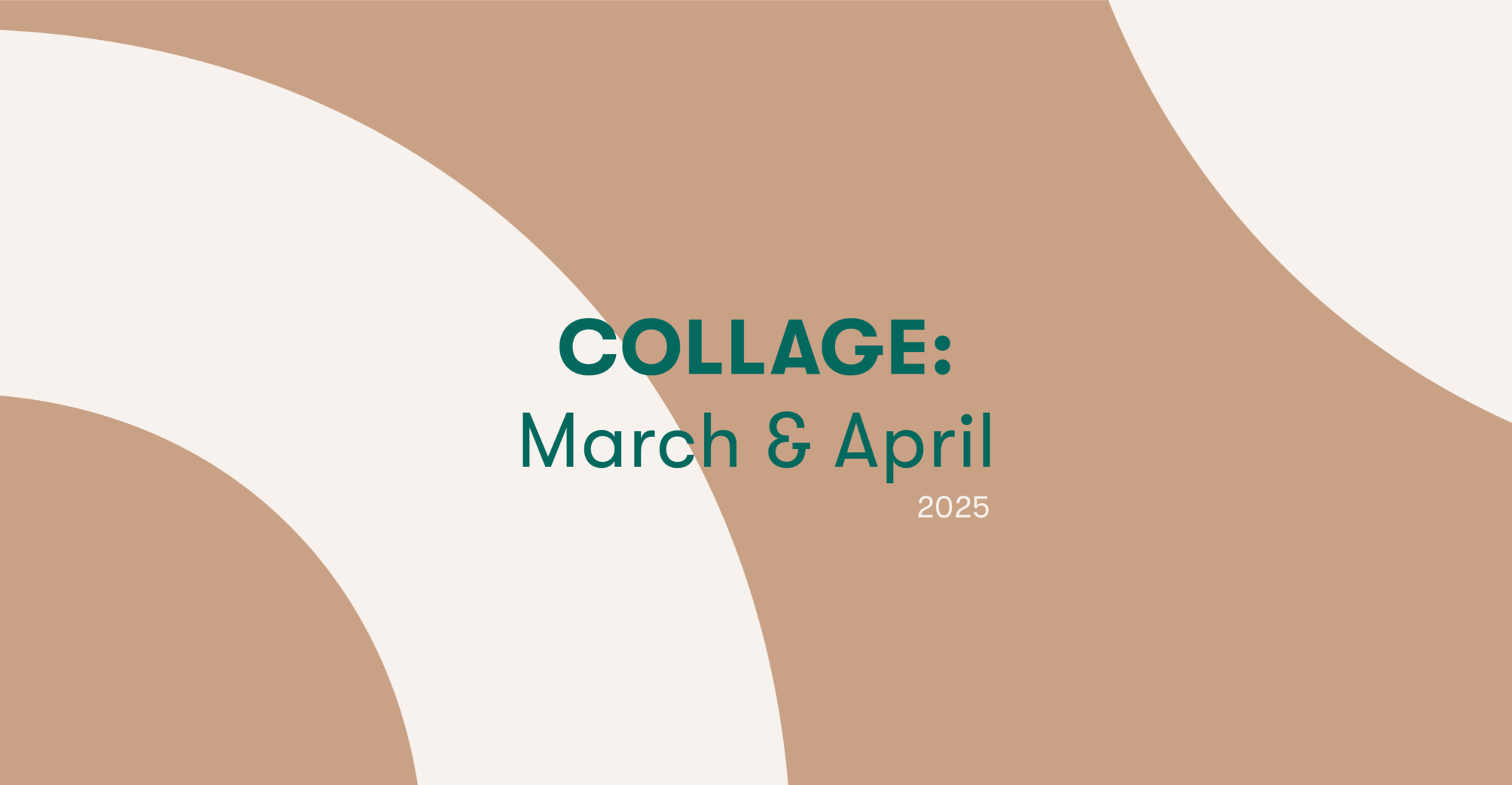
“Integrating Nature into Design” challenged participants to rethink the relationship between architecture and nature
The discussion among experts approaching the topic from various angles highlighted that access to genuinely diverse natural environments is not a given even in Finland, where people are considered to have a special relationship with nature, writes Olla’s interior architect Tea Ellala.
Olla aims to combine expertise from various fields and provide a creative platform for new architectural thinking in times of multiple crises. That’s why our office organized the Integrating Nature into Design morning at the end of February, with the idea of challenging our own thinking and bringing together expertise and different perspectives. The event featured insightful expert speeches on the relationship between nature and architecture, ranging from the scale of urban planning to the micro level. Following the thought-provoking presentations, discussions ensued from the perspectives of architecture, health, and sustainability.
The keynote speaker of the morning was architect and professor Richard Beckett from the Bartlett School of Architecture in London, who was visiting Finland with his student group. Beckett challenged the notion of building healthiness with his presentation ‘Probiotic Provocations.’ Healthy construction is not about the absence of microbes, as traditionally perceived in our sterile architectural practices, but rather about the presence of beneficial microbes. As an example of this approach, Beckett introduced bricks infused with Finnish forest floor extract.
Aki Sinkkonen, a leading researcher at the Natural Resources Institute Finland (Luke) and founder of Uute Scientific, presented research findings on daycare environments. Several studies indicate that playing in a biologically diverse playground enhances the immune system of children.
Professor Juho Rajaniemi from Tampere University addressed planetary well-being and the concept of deep ecology rewilding in his speech. Traditionally, increasing vegetation (‘greening’) aims at human well-being. Rewilding, on the other hand, aims for the flourishing of all life forms and species, in addition to human well-being.
Lastly, together with Maria Haapala and Laura Ojala, we presented Olla’s projects where the relationship between nature and architecture manifested in various ways. Approaches ranged from biophilic design to circular economy, landscape architecture, and carbon-neutral construction.

In addition to humans, designers also have a responsibility for the well-being of other species
In the discussion segment, Emeritus Professor of Medicine Tari Haahtela suggested that biodiversity loss also occurs within us humans in the form of depleted microbiota. The participants unanimously agreed that the presence of natural environments in cities is a means to combat species loss and the adverse effects of urbanization, while strengthening human health through a connection to nature.
The morning session prompted us to realize that access to diverse, health-supporting natural environments is no longer a given, even in Finland, which is considered particularly close to nature. As designers, we bear a great responsibility and also have many opportunities to influence the well-being of both humans and other species: our design must be conducted within the Earth’s carrying capacity and enable the conditions for a good life for current and future generations. We can also actively promote health through architectural means when we understand the various manifestations of nature, from the micro level to the scale of the planet.

Tea Ellala (in the picture on the right)
The author is an interior architect and was one of the event organizers at Olla Architecture


